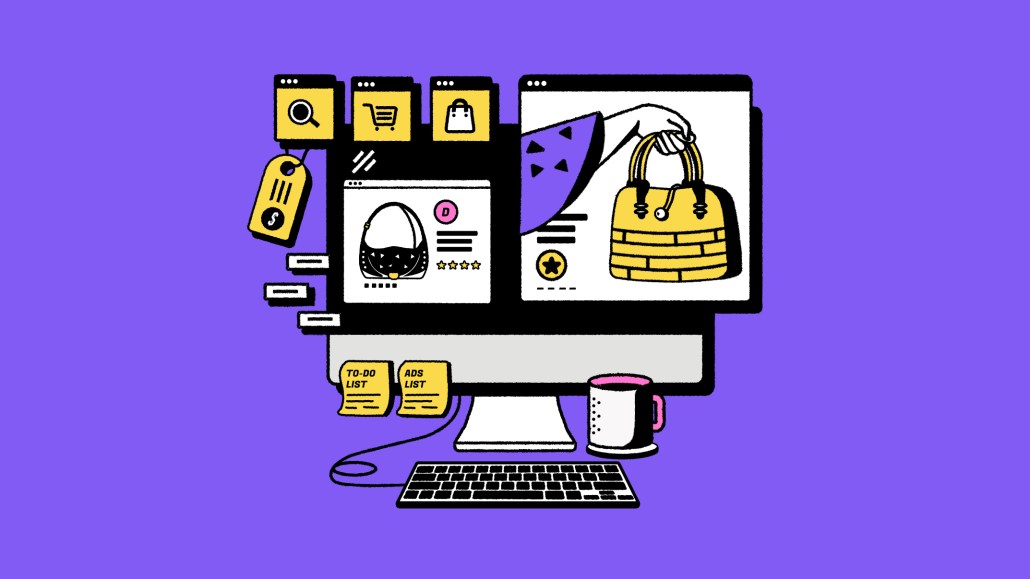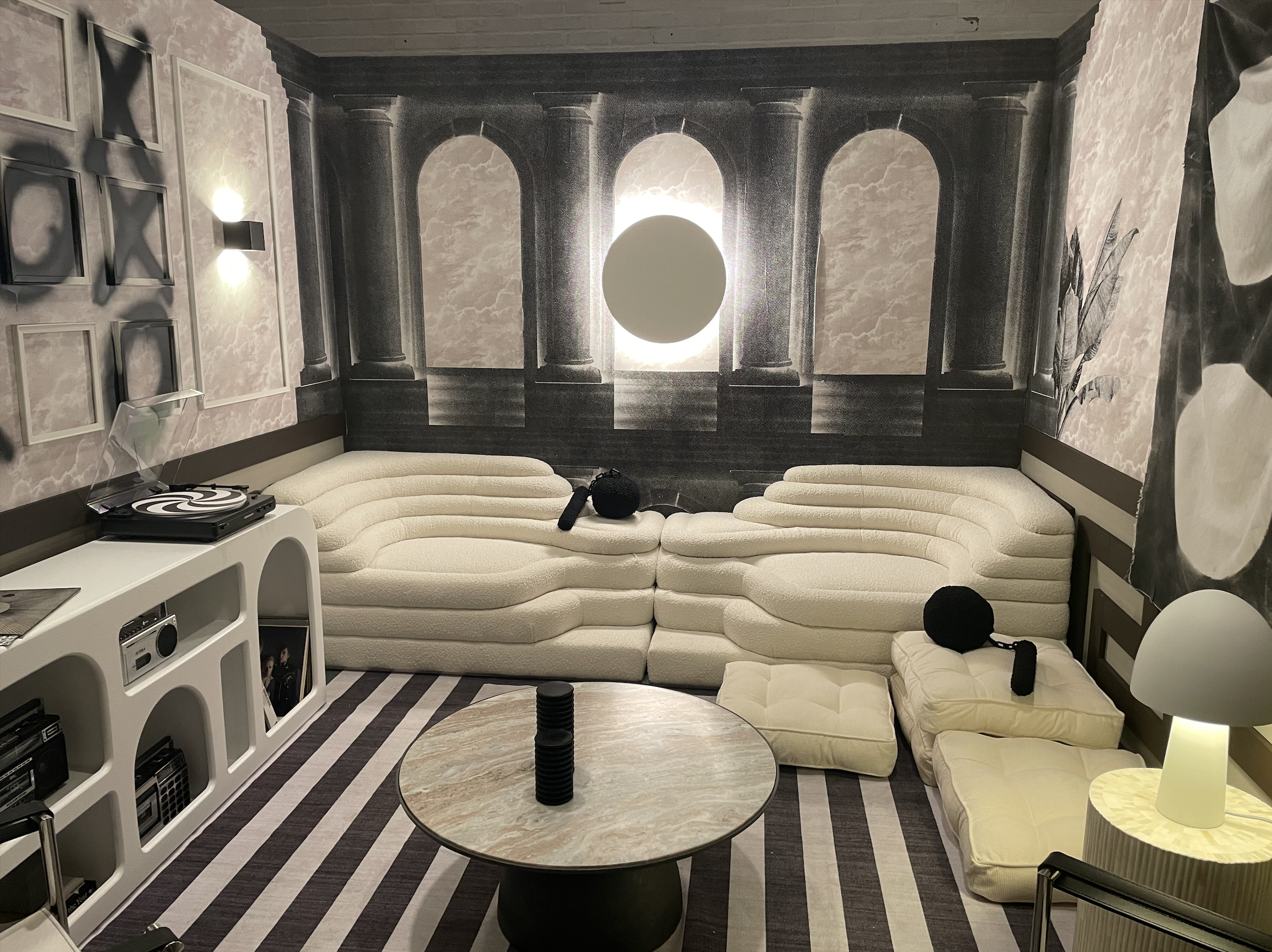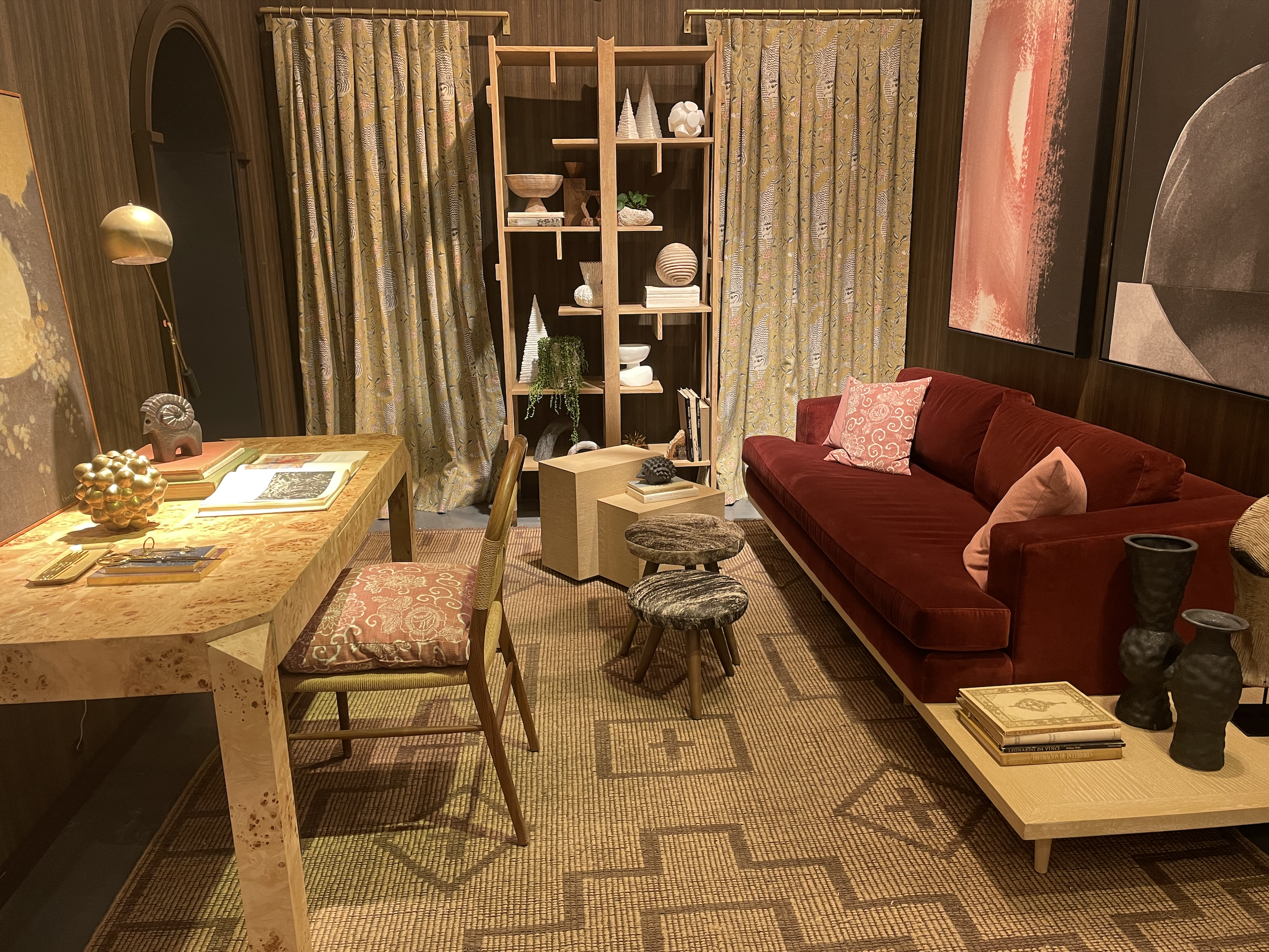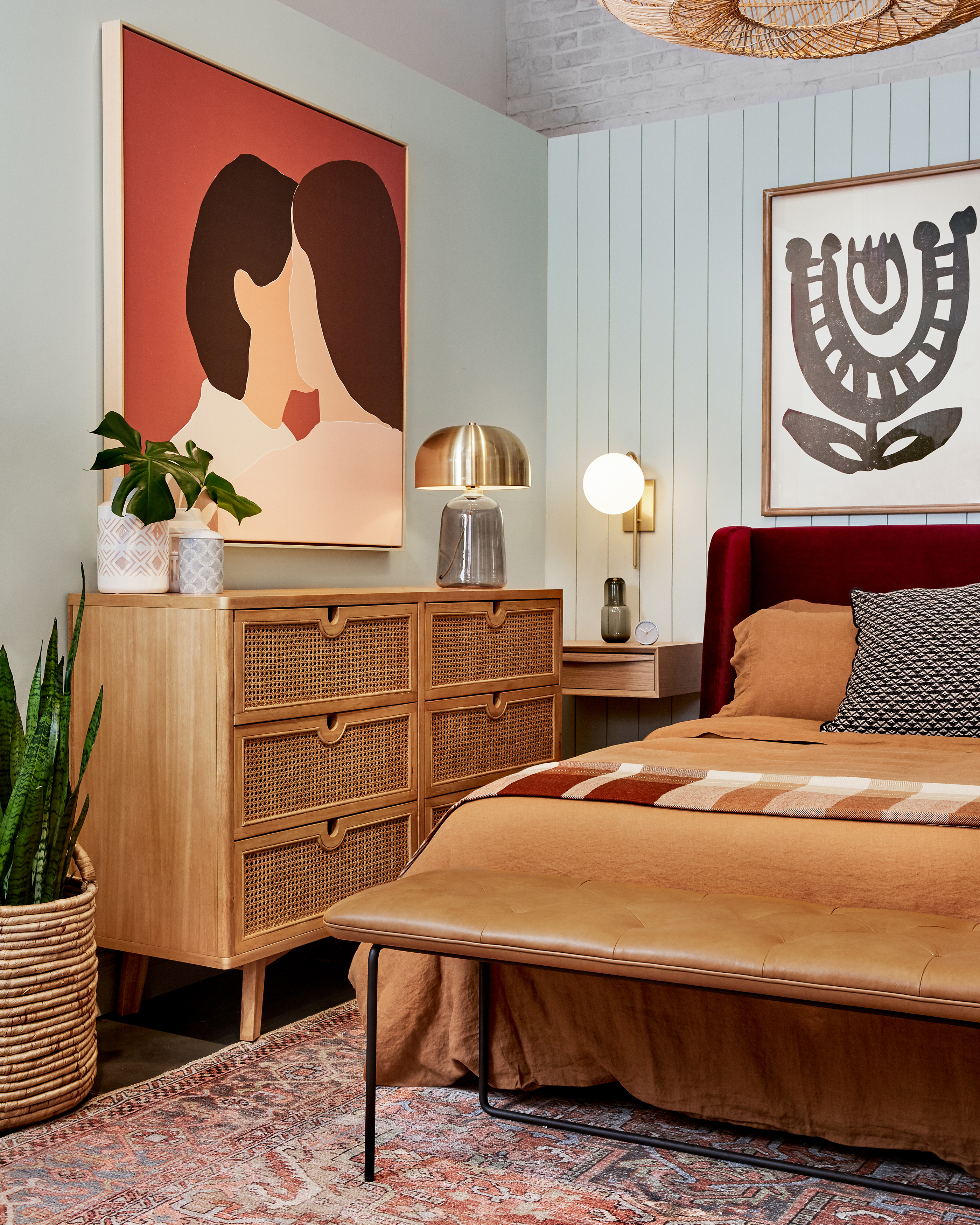Save 50% on a 3-month Digiday+ membership. Ends Dec 5.
How Apartment Therapy is using commerce to link the virtual and in-person elements of its hybrid Small/Cool event

This past weekend, on a sunny Sunday afternoon in the SoHo neighborhood of lower Manhattan, I saw what I expect was the most photographed couch in America that weekend.
The $7,000, 1970’s-inspired couch — called the Terrazza Modular Fabric Sofa from furniture company Kardiel, for those curious — was featured in one of 12 trendy furniture and decor display rooms at Apartment Therapy’s Small/Cool NYC event that kicked off this past weekend and will run for four weekends through May 15.

The largest iteration of this event franchise, AT’s Small/Cool welcomed both fans of the brand and passers-by into the curated and shoppable interior design showroom this year, instead of limiting general access to the virtual 3D rendering of the spaces.
In its first weekend, the event saw 3,000 people come through, according to Lauren Murphy, the company’s svp of marketing, and overall 15,000 people are expected at the experience. Masks were not required at the indoor event, as NYC recently rolled back vaccination and mask mandates at many indoor institutions, though approximately one-third of the people I saw were wearing masks.
Like other publishers, AT had to figure out the best hybrid approach to the return of in-person experiences that includes the virtual components audiences and sponsors have become accustomed to. For this event, the solution was connecting both executions using commerce, giving attendees of either side the ability to buy the products featured both in the physical NYC-based showroom, as well as the online spaces.
AT makes money from The Small/Cool event both from sponsorships — which brought in seven-figures of revenue prior to the kickoff, though CRO Riva Syrop declined to share exact dollar amounts — and commissions from sales made through affiliate links, earning the company between 10-20% on all purchases, on par with its standard commission rates. All of the items were selected by the designers brought on board by the editorial team and were not branded placements, aside from furniture store and sponsor Ashley’s branded room, in which a designer selected items from the retailer’s collection to display in the space.
Ad position: web_incontent_pos1
Last year — which was the first iteration of the event after the original launch date of April 2020 was postponed at the start of the pandemic — the event featured 10 rooms that were accessible in-person to 170 influencers and journalists over the course of a weekend in June. The online renderings of the rooms and shopping experience drove 1 million people to the website, according to the company.
This year, the event space has 12 120-square-foot spaces that each represent a different design trend — like “Wanderlust Fulfilled,” “Bespoke Style” and “Memphis-Deco” — picked by the editors and executed by designers that were hired by AT. Within each space, there are 20 to 30 items that visitors can purchase through a QR code that links them to a landing page with all of the affiliate links for that room’s purchasable products, as well as some discount codes made for AT’s audience.

“As much as it’s a beautiful, aesthetic, inspiring event, at its core, Small/Cool really is all about commerce, and it’s really all about providing the environment to cultivate that,” said Syrop. There are 40 different brands in total featured throughout the spaces, and the 12 designers could select any piece of furniture or decor item they liked, so long as it fit their designated theme.
Supply chain problems are the reality
Ad position: web_incontent_pos2
Attendees can’t just buy a couch and leave with it that day, however. All of the items must be purchased through the event’s landing pages (or later through the retailer itself if the consumer departs from the AT-specific link).
While this is not the Ikea model, it isn’t too unlike the other furniture stores in SoHo, which was a smart move according to Eric Fleming, co-founder and executive producer of experiential agency Makeout NYC. Because a lot of the people coming in were already meandering around the city shopping (as evidenced by the multiple shopping bags I saw attendees toting around) lugging home a big piece of furniture is not the appropriate model for the clientele.
Not having items that attendees could walk out the door with means that there are questions as to when some of the orders would arrive, given the ongoing supply chain issues that are impacting the furniture industry, which Murphy acknowledged.
“Because people have been so burned throughout the pandemic — everybody’s got a story about something they purchased that hasn’t arrived for six months — brand runs the risk of a negative [attendee] experience if they don’t do a good job [of] adequately communicating around availability expectations and successfully delivering on those,” said Fleming.
The AT team made sure that all of the products featured were at the very least still in production, but Syrop said “the long lead time, sadly, is not in our control,” meaning customers were likely going to face the realities of delivery delays to some extent.
At the event however, there weren’t any signs or warnings that something might be delayed because of the supply chain. Once an attendee clicked through the affiliate link to the retailer page, that’s when they’d be warned about any estimated delays or backorders.
And though commerce is the top priority from a user experience standpoint, Apartment Therapy isn’t relying on commissions on affiliate links to make money.
The event is profitable from the sponsorships alone, according to Syrop, and from those deals, the company earned seven-figures of revenue, meaning the commerce component will be an added bonus to the event’s total revenue.
There are five main sponsors attached — BEHR Paint, Toyota Motor North America, Ashley, Yogi Tea and Chasing Paper — and while Syrop wouldn’t name the highest paying advertiser, she did say that some of the sponsorship deals were worth up to seven-figures in revenue themselves. Beyond the advertisers sponsoring one room each, in-person workshops will also be held throughout the month focusing on craft projects that are loosely tied to each brands’ ethos or slogan.
Syrop was hesitant to estimate how much the commerce component will contribute to the event’s total revenue, but the final tally is expected to make the company’s events business account for somewhere between 7% – 10% of its overall revenue, she said.

While the commerce component is required for the event’s financial success, Murphy said a lot of effort was put in to make sure attendees are more inclined to press the buy button this year.
After the weekend-long hybrid event in 2021, a survey was sent out to all of the attendees to learn about the shopping experience. From the about 500 respondents, Murphy said that three-quarters reported they had purchased, or planned to purchased a featured product from the event site, but improvements could be made.
“Last year, we tagged a ton of products in the 3D shopping experience and then underneath, we had this shopping grid that laid out why our editors love each of the products. [From the survey,] people said that all the tags on the products were a little bit overwhelming, so this year, we really dialed back on [the number of product tags] and are simplifying it,” said Murphy. Now, the virtual rooms — which go live on April 29 — only have a few key items tagged and the rest of the products will be listed in the grid below.
The Instagram meets museum experience
I personally attended the event twice — once for the VIP opening night that gathered more influencers in a room than I’d ever seen before, and once later during the opening weekend to get a more organic feel of who the attendees were. While commerce is the business goal, it was hard to tell how interested people were in actually making a purchase at the in-person event.
I saw one person FaceTiming presumably a partner or a roommate to show them a room they particularly liked, while another couple said they were really drawn to the Ashley furniture-branded outdoor display.
A lot of people were interested in taking photos of themselves on that $7,000 showstopper couch, however, which was the centerpiece of an entirely black-and-white room that was designed by Miles Willis McDermott for the “Wanderlust Fulfilled” themed room.
It did not just feel like an Instagram photo-opp experience, however. Each room had an audio tour accessible through the QR code where the designer of the room talked about their inspiration and some specific pieces in the space, making it feel very much like a museum tour.
Design inspiration seemed to be the biggest takeaway from the event. One attendee and I found ourselves staring at a vibrant wallpaper in one of the living room spaces, and he told me that he was inspired to find an area in his home that could feature a similar colorful focal point.
Three of the people I spoke with on Sunday afternoon — there appeared to be between 40 to 50 people there at the time — said they came specifically to check out the event and get some inspiration, versus wandering in off the street, but they were not there to specifically make a purchase. Another attendee said she was more open to the idea of making a purchase given she was currently on a mission to redesign her apartment.
But ultimately one attendee summarized the Small/Cool shopping experience by saying, it’s “kind of like Ikea without being beholden to the maze of tiny rooms.”
More in Media

What publishers are wishing for this holiday season: End AI scraping and determine AI-powered audience value
Publishers want a fair, structured, regulated AI environment and they also want to define what the next decade of audience metrics looks like.

Digiday+ Research Subscription Index 2025: Subscription strategies from Bloomberg, The New York Times, Vox and others
Digiday’s third annual Subscription Index examines and measures publishers’ subscription strategies to identify common approaches and key tactics among Bloomberg, The New York Times, Vox and others.

From lawsuits to lobbying: How publishers are fighting AI
We may be closing out 2025, but publishers aren’t retreating from the battle of AI search — some are escalating it, and they expect the fight to stretch deep into 2026.
Ad position: web_bfu



